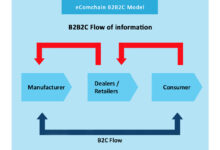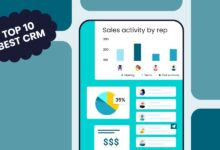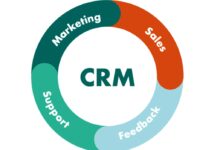b2b2c: 7 Powerful Insights That Transform Modern Commerce
In today’s hyper-connected digital economy, the b2b2c model is revolutionizing how businesses interact with customers. It’s not just a buzzword—it’s a strategic evolution merging B2B efficiency with B2C personalization. Let’s dive into what makes b2b2c a game-changer.
Understanding the b2b2c Model: A New Era of Commerce

The b2b2c (Business-to-Business-to-Consumer) model represents a hybrid approach where a business sells its products or services to another business, which then delivers them to the end consumer. Unlike traditional B2B or B2C models, b2b2c combines the strengths of both—scalability from B2B and emotional engagement from B2C.
What Exactly Is b2b2c?
At its core, b2b2c is a value chain where multiple businesses collaborate to serve the final customer. For example, a software provider (B2B) integrates its tool into an e-commerce platform (B2B), which then offers enhanced shopping experiences to consumers (B2C). This layered interaction creates a seamless ecosystem.
- The first “B” is the original product or service provider.
- The second “B” acts as a distributor, retailer, or platform.
- The “C” is the end-user who benefits from the combined offerings.
This model thrives in digital marketplaces, SaaS ecosystems, and omnichannel retail environments.
How b2b2c Differs From Traditional Models
Traditional B2B focuses on logic, ROI, and long sales cycles, while B2C emphasizes emotion, branding, and quick decisions. The b2b2c model bridges these worlds. According to McKinsey, companies leveraging b2b2c report higher customer retention and faster innovation cycles.
“The b2b2c model isn’t just about selling through intermediaries—it’s about co-creating value with them.” — McKinsey & Company
Unlike pure B2B, where the end consumer is often invisible, b2b2c demands visibility into customer behavior, preferences, and feedback loops.
Historical Evolution of b2b2c
The roots of b2b2c can be traced back to franchising and distributor networks. However, the digital age accelerated its adoption. The rise of e-commerce platforms like Amazon, Shopify, and Alibaba enabled manufacturers (B2B) to reach consumers (B2C) via third-party marketplaces (B2B).
The smartphone revolution and cloud computing further empowered b2b2c by enabling real-time data sharing, personalized experiences, and integrated logistics. Today, industries from healthcare to fintech are adopting b2b2c to stay competitive.
Key Advantages of the b2b2c Strategy
The b2b2c model offers unique benefits that traditional models can’t match. By aligning business goals with consumer needs, companies unlock new growth avenues. Let’s explore the most impactful advantages.
Expanded Market Reach Without Direct Customer Acquisition
One of the biggest strengths of b2b2c is the ability to scale quickly. Instead of building a direct-to-consumer (DTC) infrastructure, businesses partner with established platforms to access large customer bases.
- A skincare brand can sell through Sephora’s online store without managing its own e-commerce site.
- A fintech API provider integrates with banks that serve millions of retail customers.
This reduces marketing costs and accelerates time-to-market. According to Forbes Tech Council, b2b2c partnerships can increase market penetration by up to 40% compared to standalone B2B efforts.
Enhanced Customer Experience Through Collaboration
In a b2b2c setup, both businesses contribute to the end-user experience. The B2B partner provides backend efficiency (logistics, data, technology), while the B2C-facing partner handles front-end engagement (branding, support, UX).
For instance, when Nike partners with Amazon, Nike ensures product quality and inventory, while Amazon manages delivery, reviews, and customer service. This synergy leads to faster delivery, better personalization, and higher satisfaction.
“The best b2b2c experiences feel invisible—customers don’t care who does what, as long as it works.” — Harvard Business Review
Data Sharing and Consumer Insights
Unlike traditional B2B, where customer data is siloed, b2b2c enables secure data sharing between partners. This allows the original supplier to understand end-user behavior, preferences, and pain points.
For example, a smart home device manufacturer can receive anonymized usage data from a utility company that sells its products to homeowners. This feedback loop drives product innovation and targeted marketing.
However, data privacy remains a challenge. Companies must comply with GDPR, CCPA, and other regulations while ensuring transparency with consumers.
Real-World Examples of Successful b2b2c Implementations
Theoretical understanding is valuable, but real-world examples bring the b2b2c model to life. Let’s examine how leading companies have leveraged b2b2c to achieve remarkable results.
Amazon and Third-Party Sellers
Amazon is perhaps the most iconic b2b2c platform. Millions of manufacturers and brands (B2B) sell their products through Amazon’s marketplace (B2B), which delivers them directly to consumers (B2C).
- Amazon handles fulfillment, customer service, and logistics via FBA (Fulfillment by Amazon).
- Sellers focus on product development and branding.
- Consumers enjoy fast shipping, easy returns, and trusted reviews.
This model has made Amazon a dominant force in global retail. According to Statista, over 60% of Amazon’s sales come from third-party sellers, highlighting the scalability of b2b2c.
Apple and App Developers
Apple’s App Store is another prime example of b2b2c. Independent developers (B2B) create apps that are distributed through Apple’s ecosystem (B2B), reaching billions of iPhone users (B2C).
Apple provides the platform, security, payment processing, and discovery tools. Developers focus on innovation and user experience. Both parties benefit: Apple earns a commission, and developers gain global reach.
This symbiotic relationship has created a $1.1 trillion economy, according to Apple’s 2021 economic impact report.
Microsoft and Enterprise SaaS Partners
Microsoft Azure enables software companies to build and deploy applications on its cloud infrastructure (B2B). These applications are then sold to end businesses or consumers (B2C).
For example, a CRM startup uses Azure for hosting and AI capabilities, then sells its solution to small businesses. Microsoft gains revenue from cloud usage, the startup scales quickly, and customers get a reliable product.
This b2b2c ecosystem has helped Microsoft become a leader in cloud computing, with Azure generating over $30 billion in annual revenue.
Challenges and Risks in the b2b2c Ecosystem
While b2b2c offers immense potential, it’s not without challenges. Companies must navigate complex relationships, data governance, and brand alignment to succeed.
Brand Control and Identity Dilution
When selling through third-party platforms, businesses risk losing control over their brand image. For example, a luxury brand on a discount marketplace may appear less exclusive.
Additionally, inconsistent customer service or poor platform design can reflect negatively on the original supplier. To mitigate this, companies must establish clear brand guidelines and performance metrics in partnership agreements.
Data Privacy and Security Concerns
Sharing consumer data across partners increases the risk of breaches and misuse. In a b2b2c model, multiple entities have access to sensitive information, making compliance with data protection laws critical.
- Companies must implement end-to-end encryption.
- Data access should be role-based and auditable.
- Transparency with consumers about data usage is non-negotiable.
A single data breach can damage trust across the entire ecosystem, not just one company.
Profit Margin Pressures
In b2b2c, revenue is often shared among partners. Platforms like Amazon or Apple take a 15–30% commission, reducing the supplier’s margin.
To remain profitable, businesses must optimize operations, reduce costs, or differentiate their offerings. Some brands respond by building hybrid models—using b2b2c for reach while maintaining a direct channel for higher margins.
How to Build a Successful b2b2c Strategy
Adopting b2b2c isn’t just about finding a partner—it’s about designing a sustainable, value-driven ecosystem. Here’s a step-by-step guide to building a winning b2b2c strategy.
Identify the Right Partners
Not all platforms are suitable for every business. Choose partners that align with your brand values, target audience, and operational capabilities.
- Conduct due diligence on potential partners’ reputation, customer base, and technical infrastructure.
- Look for partners with strong customer trust and engagement metrics.
- Start with pilot programs before scaling.
For example, a sustainable fashion brand should partner with eco-conscious retailers, not fast-fashion marketplaces.
Design a Seamless Customer Journey
The end-user should experience a unified journey, regardless of how many businesses are involved. Map out every touchpoint—from discovery to post-purchase support.
Ensure consistency in branding, messaging, and service quality. Use APIs and integration tools to synchronize inventory, pricing, and order tracking.
For instance, when a customer buys a product on a marketplace, they should receive shipping updates from the platform, but support inquiries should be handled seamlessly by the brand if needed.
Leverage Data for Continuous Improvement
Use shared analytics to monitor performance, identify bottlenecks, and optimize the customer experience.
- Track conversion rates, return rates, and customer satisfaction scores.
- Conduct joint reviews with partners to align on KPIs.
- Invest in AI-driven insights to predict trends and personalize offers.
Data isn’t just for reporting—it’s a strategic asset in b2b2c.
The Role of Technology in Enabling b2b2c
Technology is the backbone of the b2b2c model. Without robust digital infrastructure, collaboration, data sharing, and scalability would be impossible.
APIs and Integration Platforms
Application Programming Interfaces (APIs) allow different systems to communicate. In b2b2c, APIs connect suppliers, distributors, and platforms in real time.
For example, a hotel chain (B2B) uses APIs to sync room availability with booking sites like Expedia (B2B), which then sells to travelers (B2C). Any change in availability is instantly reflected across all channels.
According to ProgrammableWeb, the number of public APIs has grown from a few hundred in 2005 to over 25,000 today, fueling b2b2c innovation.
Cloud Computing and Scalability
Cloud platforms like AWS, Google Cloud, and Microsoft Azure provide the infrastructure for b2b2c ecosystems to scale on demand.
They offer storage, computing power, security, and global reach—essential for handling spikes in consumer traffic during sales or holidays.
A startup can launch a product on a major marketplace without investing in physical servers, thanks to cloud elasticity.
AI and Personalization Engines
Artificial intelligence enables hyper-personalization in b2b2c. By analyzing consumer behavior, AI can recommend products, optimize pricing, and predict demand.
For example, Netflix uses AI to recommend content, but the content is produced by studios (B2B) and delivered through Netflix (B2B) to viewers (B2C). This b2b2c model thrives on personalization.
AI also powers chatbots and virtual assistants that provide 24/7 support across partner networks.
Future Trends Shaping the b2b2c Landscape
The b2b2c model is evolving rapidly. Emerging technologies and shifting consumer expectations are redefining how businesses collaborate.
Rise of Private Label Marketplaces
More B2B companies are launching their own consumer-facing marketplaces. For example, industrial suppliers like Grainger now offer e-commerce sites where businesses and individual consumers can buy tools and equipment.
This trend allows B2B brands to capture more value and build direct relationships with end-users while still serving business clients.
Blockchain for Transparency and Trust
Blockchain technology can enhance trust in b2b2c by providing immutable records of transactions, product origins, and data sharing.
In supply chains, blockchain can verify the authenticity of luxury goods or ethical sourcing of raw materials. Consumers gain confidence, and partners reduce fraud risks.
Companies like IBM and Walmart are already using blockchain to track food products from farm to table—a b2b2c application with huge implications.
Hyper-Personalization and Predictive Commerce
Future b2b2c experiences will be predictive. AI will anticipate consumer needs before they arise, offering products and services proactively.
Imagine a smart refrigerator (B2B hardware) that detects low milk levels, places an order via a grocery platform (B2B), and schedules delivery (B2C). The entire process is automated and personalized.
This level of integration will require deeper collaboration, advanced data models, and consumer consent frameworks.
Why b2b2c Is the Future of Digital Commerce
The b2b2c model is not a passing trend—it’s a fundamental shift in how value is created and delivered. As digital ecosystems grow more interconnected, the lines between B2B and B2C will continue to blur.
Convergence of B2B and B2C Expectations
Today’s business buyers expect the same ease and speed as consumer shoppers. They want intuitive interfaces, fast delivery, and personalized service—hallmarks of B2C.
Similarly, consumers increasingly value the reliability, bulk options, and professional support associated with B2B. b2b2c satisfies both sets of expectations.
Sustainability and Ethical Commerce
Consumers and businesses alike are demanding ethical practices. b2b2c enables transparency across the value chain, from sourcing to delivery.
Partners can jointly promote sustainability initiatives, such as carbon-neutral shipping or fair-trade sourcing, enhancing brand loyalty.
Globalization and Localized Experiences
b2b2c allows global brands to offer localized experiences through regional partners. A cosmetics company can adapt its formulations and marketing for different markets via local retailers.
This balance of global scale and local relevance is key to international success.
What is b2b2c?
b2b2c, or Business-to-Business-to-Consumer, is a commercial model where a business sells its products or services to another business, which then delivers them to the end consumer. It combines the scalability of B2B with the customer-centric focus of B2C.
How does b2b2c benefit small businesses?
Small businesses can leverage b2b2c to access large customer bases through established platforms without the high cost of building their own distribution and marketing infrastructure. It enables faster growth and market validation.
What are the risks of b2b2c?
Risks include loss of brand control, data privacy concerns, and reduced profit margins due to revenue sharing. Success requires strong partnerships, clear agreements, and robust technology integration.
Can a company use both b2b2c and direct-to-consumer models?
Yes, many companies adopt a hybrid approach. They use b2b2c for scale and reach while maintaining a direct-to-consumer channel for higher margins and deeper customer relationships.
Which industries are adopting b2b2c the fastest?
E-commerce, SaaS, healthcare, fintech, and retail are leading the adoption of b2b2c. Any industry with complex value chains and digital touchpoints can benefit from this model.
The b2b2c model is reshaping the future of commerce. By blending the efficiency of B2B with the emotional resonance of B2C, it creates ecosystems where businesses and consumers win together. From Amazon’s marketplace to Apple’s App Store, real-world success stories prove its viability. While challenges like brand control and data security exist, the right strategy, technology, and partnerships can overcome them. As AI, blockchain, and cloud computing advance, b2b2c will become even more seamless, personalized, and global. For businesses aiming to thrive in the digital age, understanding and adopting b2b2c isn’t optional—it’s essential.
Further Reading:





